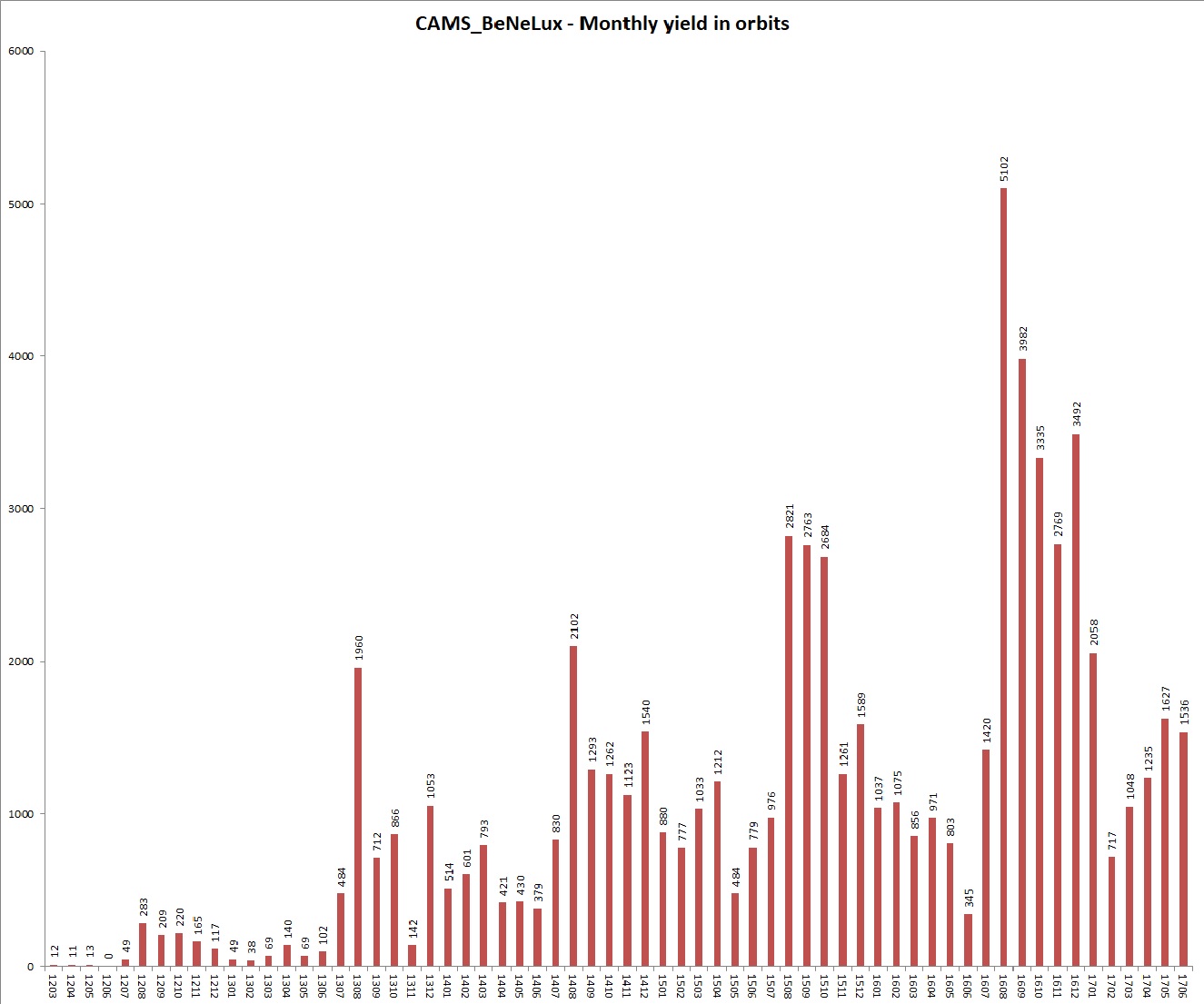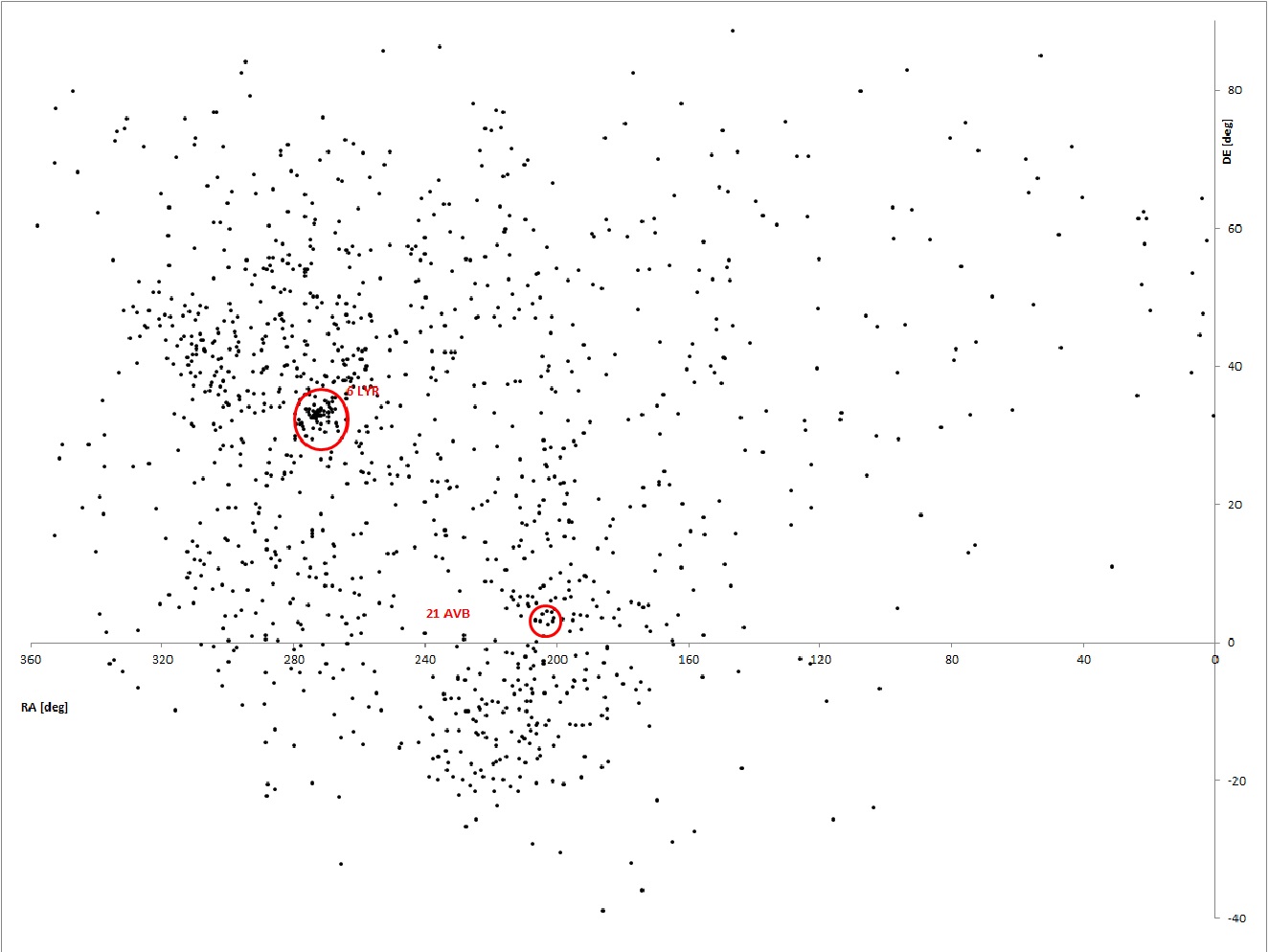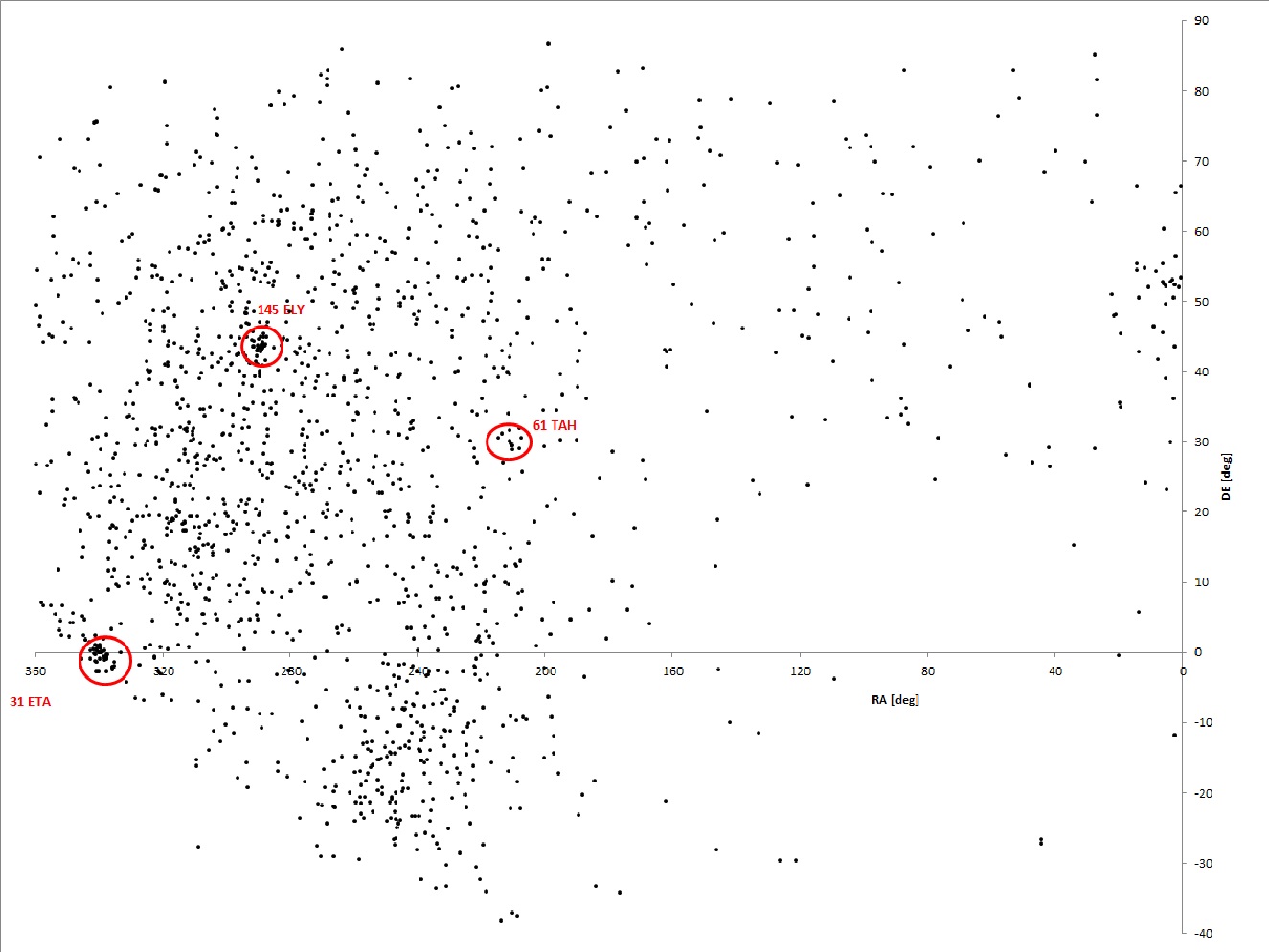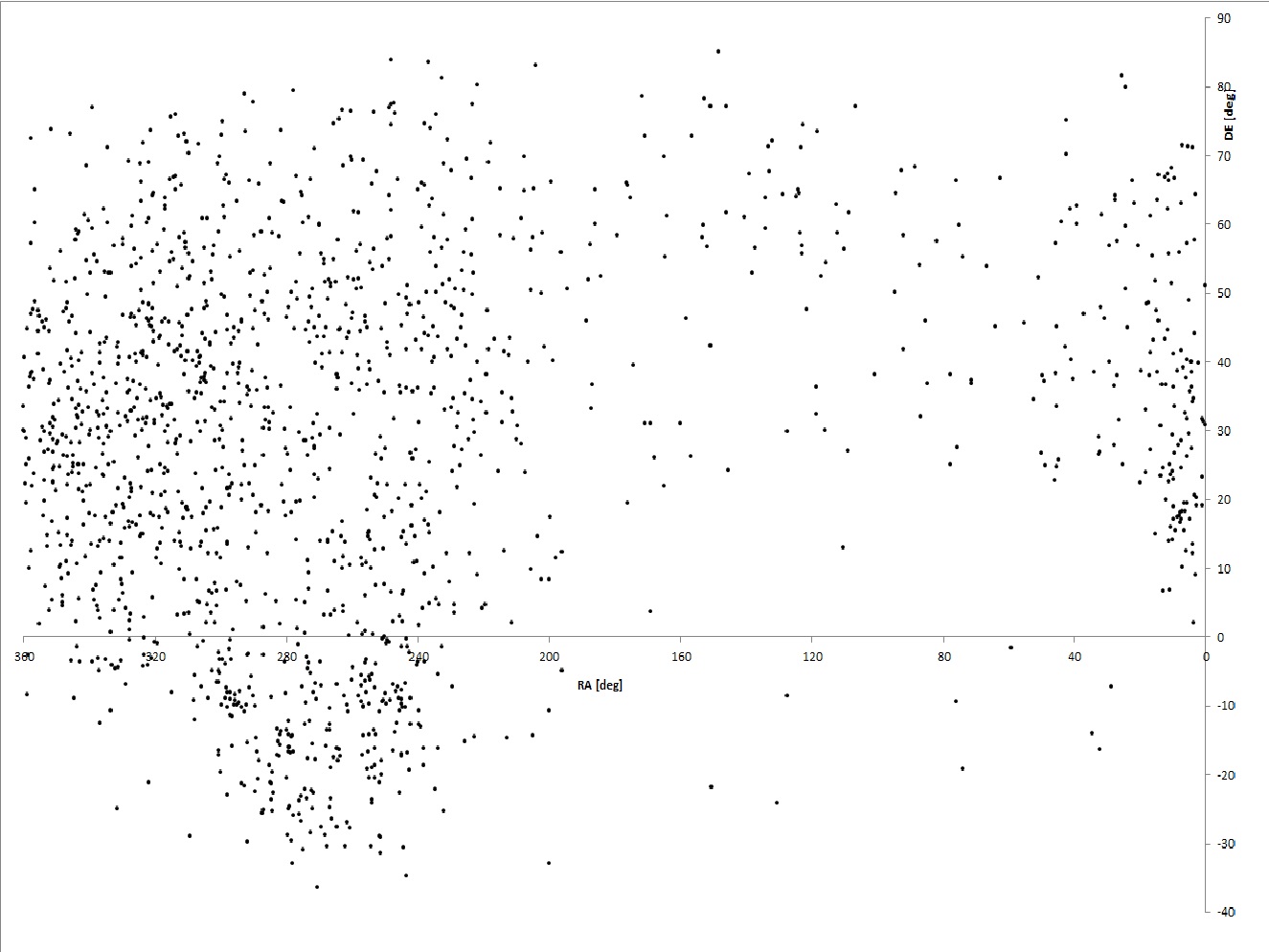Summary
The second quarter of 2017 allowed for the collection of orbits during 78 nights of the total of 91 nights. 4398 orbits were added to the CAMS database in this period. Weather was very cooperative in April and June. Only the first half of May was hampered by some unsettled weather.

Figure 1 : performance graph of CAMS BeNeLux : number of simultaneous orbits collected since the start of this network in March 2012
APRIL:
April was dominated by a lot of clear nights and with the exception of the nights April 16/17 and April 21/22 (Lyrid maximum), CAMS BeNeLux was able to collect a reasonable amount of orbits of meteors. Our cameras operated over a total of 11 000 hours.
All in all April was a very successful month indeed.
During the remaining 28 nights we collected 1235 orbits, and although we missed the Lyrid maximum, CAMS nevertheless obtained 62 orbits of Lyrids during other nights this month.
Robert Haas (Alphen aan de Rijn – Netherlands) expanded his network with CAMS 367 and 368 starting April 7th. Jean Marie Biets (Wilderen-Belgium) added a third camera (CAMS 380) to his network on April 10th.
Felix Bettonvil (Utrecht – Netherlands) was able to restart his CAMS 376 on April 17th.
Unfortunately, Tim Polvliet (Gent-Belgium) stopped his CAMS activities at the end of April.
Besides the Lyrids, activity from other ‚confirmed‘ streams could be detected this month : April rho Cygnids (348 ARC), h Virginids (343 HVI) and the alpha Virginids (15 AVB).
From the latter we collected 15 orbits with the following mean orbital elements (in brackets the elements for this stream in [2]:
a = 2,47 [2,55] ; e = 0,6928 [0,716] ; q = 0,7479 [0,744] ;
i = 6,1 [7,0] ; w = 247,4 [247,9]
Finally, we found 22 members of the zeta Cygnids (40 ZCY), with the following mean orbital elements:
a = 7,53 [3,93] ; e = 0,8138 [0,78] ; q = 0,9058 [ 0,90] ;
i = 69,94 [74,9] ; w = 142,3 [140,5]

Figure 2 : radiantplot for April 2017
MAY
The month of May showed a more inconstant weather.
During seven nights we couldn’t collect any simultaneous meteor : May 2/3 ,
3 /4, 4/5 , 7/8 , 11/12 , 15/16 and 18/19 .
The second part of the month was much more succesful and in total we captured
1627 orbits in a little more than 8800 hours.
Martin Breukers (Hengelo – Netherlands) permanently installed camera 327 in our network on May 5th.
Piet Neels (Ooltgensplaat – Netherlands) expanded his network with two more cameras this month. CAMS 340 started at May 12, and CAMS 345 at May 26th.
Apart from much activity from the Scorpius-Aquila-region, we collected data for the eta Aquariïds , the eta Lyrids and the tau Herculids.
For details we refer to articles in [3 , 4]

Figure 3 : radiantplot for May 2017
JUNE
Never before since the start of our network in 2012, June was this succesful.
A total of 1536 orbits were collected during more than 6800 hours of capturing.
That is nearly a doubling of the highest June-rates since the start in 2012.
During only four nights our network was clouded out completely: June 7/8 ,
24/25 , 27/28 and June 30/July 1st.
Starting June 19th the network of Felix Bettonvil (Utrecht – Netherlands) is fully operable , since CAMS 377 could start the observations again.
Once again Piet Neels expanded his network with two more cameras.
Since June 10th CAMS 349 is active, and June 23rd CAMS 840 was added.
No special activity from confirmed streams [2], nor unexpected activity was recorded.
A lot of activity from the Ophiuchus-Scorpius region, as can be expected in this month. From the confirmed streams the Tau Herculids (61 TAH), northern june Aquiïlids (164 NZC) , phi Piscids (372 PPS) and june rho Cygnids (510 JRC) showed activity on several nights.
We also noticed activity from the not yet confirmed epsilon Ursae Majorids (186 EUM) .
Robert Haas (Alphen aan de Rijn – Netherlands, CAMS 360) and Koen Miskotte (Ermelo – Netherlands, CAM 352) caught a june Boötid on June 19th at 23:25:16 UT.
Piet Neels (Ooltgensplaat – Netherlands, CAMS 340) and Klaas Jobse (Oostkapelle – Netherlands, CAMS 338) captured another one on June 26th at 21:38:54 UT.

Figure 4 : radiantplot for June 2017
Conclusion
The second quarter of 2017 CAMS BeNeLux was very successful, with a record number of orbits.
This is partly due to good meteorological circumstances, but a rearrangement of the aiming points of several CAMS cameras also plays a significant role.
Thanks to Paul Roggemans who invested a lot of time to get a more optimal coverage of the sky above our countries.
Besides that, our network is still increasing, as stated by several new cameras added to our network by some operators.
Acknowledgement
Many thanks to all participants in the CAMS BeNeLux network:
Hans Betlem (Leiden, CAMS 371, 372, 373), Felix Bettonvil (Utrecht, CAMS 376, 377) , Jean Marie Biets (Wilderen, CAMS 380, 381, 382), Bart Desoy (Zoersel, CAMS 397, 398), BISA / Hervé Lamy (Dourbes / Ukkel, CAMS 394, 395 / 393), Martin Breukers (Hengelo,
CAMS 320 t/m 327), Franky Dubois (Langemark, CAMS 386), Luc Gobin (Mechelen, CAMS 390,391), Robert Haas (Alphen aan de Rijn, CAMS 360-365, 367, 368), Robert Haas / Edwin van Dijk (Burlage, CAMS 801, 802),
Klaas Jobse (Oostkapelle, CAMS 331, 332, 337, 338, 339) , Carl Johannink (Gronau, CAMS 311 – 318), Koen Miskotte (Ermelo, CAMS 351-354), Piet Neels (Ooltgensplaat, CAMS 340 – 345, 349, 840), Steve Rau (Zillebeke, CAMS 385, 387), Paul Roggemans (Mechelen, CAMS 383, 384, 388, 389, 399), Hans Schremmer (Niederkruechten, CAMS 803), Erwin van Ballegoij (CAMS 347, 348).
Their efforts are most important for the achievements of our network.
References:
[1] Jenniskens P , Gural P.S., Dynneson L. , Grigsby B.J. , Newman K.E. ,
Borden M. , Koop M. , Holman D. , CAMS: Cameras for Allsky Meteor
Surveillance to establish minor meteor showers , ICARUS 216 (2011) ,
- 40 – 61
[2] Jenniskens P. et. al. , The established meteor showers as observed by CAMS,
ICARUS 266 (2016), p.331 – 354
[3] Miskotte K. , Johannink C. , Afval van een oude bekende : de eta Lyriden
afkomstig van komeet IRAS-Araki-Alcock (C/1983 H1) , eRadiant 2017/3 ,
- 69 – 73
[4] Miskotte K. , van ’t Leven J. , Johannink C. . Tau Herculiden activiteit
vastgelegd door CAMS , eRadiant 2017-4 , p. 76 – 85




